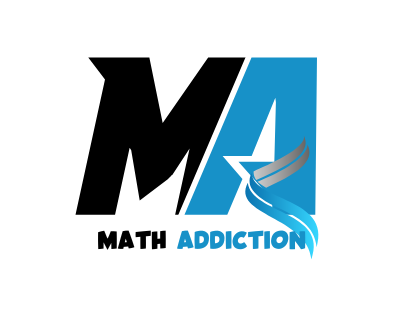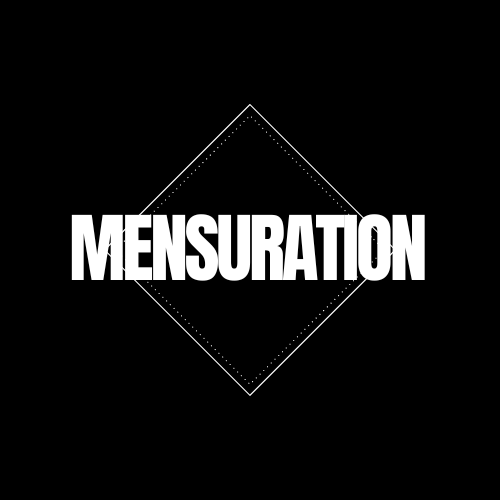Mensuration is a vital aspect of geometry that involves the measurements of geometric shapes and figures. It plays a significant role in various real-world applications, including construction, architecture, and engineering. In class 8, students are introduced to basic mensuration concepts and formulas, which serve as the building blocks for more advanced mathematical concepts in higher grades. Let’s delve deeper into the essential mensuration formulas that class 8 students learn.

Table of Contents
What is Mensuration?
Mensuration is a branch of Mathematics that deals with the measurement of geometric figures such as length, breadth, area, volume, and other related quantities. It involves formulas and techniques for calculating measurements of various shapes and solids, triangles, circles, rectangles, spheres, and cylinders etc.
What is Perimeter?
Perimeter is the sum of all the sides of a polygon. For example, perimeter of a triangle= Sum of all three sides, perimeter is measured in linear units.
Perimeter Formulas
- Perimeter of Square (P) = 4 × Side(S), P= 4×S
- Perimeter of Rectangle(P)= 2× (Length(L) + Breadth(B)), P=2×(L+B)
- Perimeter of Parallelogram(P)= 2 × (Length(L) + Breadth(B)),P= 2×(L+B)
- Perimeter of Triangle(P) = Sum of all sides
- Perimeter of Right Angle Triangle(P)= Sum of all sides
- perimeter of Equilateral(P)= 3 × Side(S), P=3× S
- Perimeter of Trapezium(P)= Sum of all sides.
- Perimeter of Rhombus(P)= 4 × Side(S),P= 4×S
- Perimeter of Circle(P)= 2πr
- Perimeter of Quadrilateral(P)= Sum of all sides
- Perimeter of Kite(P)= Sum of all sides
What is Area?
Area is the space covered by the figure or any two-dimensional geometric shape, is called the area of the shape, area is measured in square units.
Area Formulas
- Area of Square(A)= Side(S) × Side(S) or Side², (Square units)
- Area of Rectangle(A)= Length(L) × Breadth(B), A= L×B, (Square units)
- Area of Parallelogram(A)= Base(B) × Height(H), A= B×H, (Square units)
- Area of Triangle(A)= ½× Base(B) × Height(H) A=½×B×H, (Square units)
- Area of Right Angle Triangle(A)= ½×Base(B)×Height(H),A= ½×B×H, (Square units)
- Area of Equilateral Triangle(A)= √3∕4× Side², A= √3∕4× S², (Square units)
- Area of Trapezium(A)= ½×[Sum of Parallel Sides] × Height(H), A= ½×[Sum of Parallel Sides] × H, (Square units)
- Area of Rhombus (A)= ½×[Product of Diagonal(D)], A = ½×D1×D2, (Square units)
- Area of Circle(A)= π× (Radius)², A=πr², (Square units)
- Area of Quadrilateral(A)= Base (B) × Height(H), A= B×H, (Square units)
- Area of Kite(A)= ½×[Product of Diagonal(D)], A=½×D1×D2, (Square units)
What is Surface Area?
The surface area is the amount of space covering the outside of a 3D shape, it is measured in square units.
Lateral Surface and Curved Surface Area Formulas
- Lateral Surface Area of a Cube(LSA)= 4 × Side²,LSA= 4×S², (Square units)
- Lateral Surface Area of a Cuboid(LSA)=[2×(Length(L) × Breadth(B))× Height(H)], LSA= 2(L+B)× H, (Square units)
- Curved Surface Area of a Cylinder(CSA)= 2× π×Radius(r)×Height(H), CSA=2πrh, (Square units)
- Curved Surface Area of a Cone(CSA)=π×Radius(r)×Slant height(l), CSA=πrl, (Square units)
- Curved Surface Area of a Sphere(CSA)=4×π×Radius²(r), CSA=4πr², (Square units)
- Curved Surface Area of a Hemisphere(CSA)=2×π×Radius²(r), CSA=2πr², (Square units)
What is Total Surface Area?
Total surface area refers to the area of all faces of a three-dimensional shape. For example, total surface area of a cube= Area of 6 faces.
Total Surface Area Formulas
- Total Surface Area of a Cube(TSA)=6 × Side², TSA= 6×S², (Square units)
- Total Surface Area of a Cuboid(TSA)= 2×[Length(L)× Breadth(B)+ Breadth(B)×Heigth(H)+Length(L)× Height(H)], 2×[LB + BH+LH], (Square units)
- Total Surface Area of a Cylinder(TSA)=2×π×Radius(Radius+ Height), TSA= 2πr(r+h), (Square units)
- Total Surface Area of a Cone(TSA)=π×Radius[Radius(r)+slant height(l)], TSA=πr(r+l), (Square units)
- Total Surface Area of a Sphere(TSA)=4×π×Radius²(r), TSA=4πr², (Square units)
- Total Surface Area of a Hemisphere(TSA)=3×π×Radius²(r), TSA= 3πr², (Square units)
What is Volume?
Volume is the amount of space occupied by any three-dimensional shape; volume is measured in cubic units.
Volume Formulas
- Volume of Cube(V)=Length³(L), V=L³, (Cubic units)
- Volume of Cuboid(V)=[Length(L)× Breadth(B)× Height(H)], V=[L×B×H], (Cubic units)
- Volume of Cylinder(V)= π×Radius²(r)×Height(H), V=πr²h, (Cubic units)
- Volume of Cone(V)=1∕3×π×Radius²(r)×Height(h), V=1∕3πr²h, (Cubic units)
- Volume of Sphere(V)= 4∕3×π×Radius³(r), V=4∕3πr³, (Cubic units)
- Volume of Hemisphere(V)= 2∕3×π×Radius³(r), V=2∕3πr³, (Cubic units)
Who is the Father of Mensuration?
Leonard Digges is the father of mensuration.
Things to Remember
- Perimeter of a Circle = Circumference of a Circle.
- The value of π (pi) is equal to 22/7 or 3.14
- 1 L = 1000cm³
- 1 L = 1000cm³
- Perimeter is measured in Linear units.
- Area is measured in Square units.
- Volume is measured in Cubic units.
Conclusion
Understanding mensuration formulas is essential for class 8 students to solve geometric problems effectively. By mastering these formulas, students not only develop their mathematical skills but also gain practical knowledge applicable in various fields. Regular practice and application of these formulas will strengthen students problem solving abilities and lay a solid foundation for advanced mathematical concepts in the future.
Recommended Reading:
Difference between Pyramid and Prism with Examples (Key Differences)
Area of Triangle Class 9- Definition, Important Formulas, Examples, Practice Questions & FAQs.
Basic Trigonometry Formulas for Beginners in 2024- Definition, Table, all Important Formulas & FAQs.
FAQs
Q.1 Find the perimeter of a square whose side is 20 cm.
Solution: We know that, perimeter of square = 4 × Side
Therefore, Perimeter of square = 4 × 20 = 80 cm.
Q.2 Find the area of a square whose side is 10 m.
Solution: We know that, Area of square = Side × Side
Therefore, area of square = 10 × 10 = 100 m².
Q.3 Find the perimeter of a rectangle whose length is 5 m and Breadth is 6 m.
Solution: We know that, Perimeter of rectangle = 2×(L + B)
Therefore, Perimeter of rectangle= 2×(5 + 6) = 2 × 11 = 22 m.
Q.4 Find the area of rectangle whose length is 4 cm and breadth is 7 cm.
Solution: We know that, area of rectangle = (L × B)
Therefore, Area of rectangle= 4 × 7 = 28 cm².

